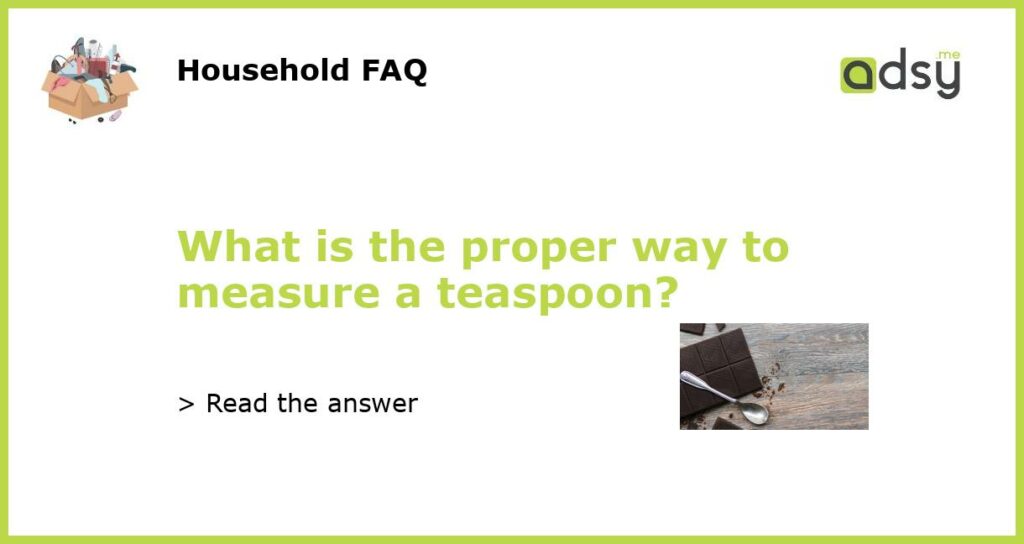The Importance of Accurate Measurement
When it comes to cooking and baking, accurate measurement is essential for achieving the desired results. Whether you’re following a recipe or experimenting with your own creations, using the correct amount of ingredients is crucial for both taste and texture. One common measurement in many recipes is the teaspoon, but how can you ensure you are measuring it properly?
Understanding Different Teaspoon Sizes
Before diving into the proper way to measure a teaspoon, it’s important to understand that there are different teaspoon sizes used around the world. The most common teaspoon size in the United States is the “standard” or “level” teaspoon, which holds approximately 5 milliliters or 5 grams of a substance.
In contrast, the United Kingdom and Canada use the “metric” teaspoon, which holds 4.93 milliliters or 5 grams. Other countries may have their own variations, so it’s important to be aware of these differences when following recipes from diverse sources.
The Proper Technique for Measuring a Teaspoon
Now that you understand the varying teaspoon sizes, let’s discuss the proper technique for measuring a teaspoon. To ensure accuracy, follow these steps:
- Start by choosing a flat and level measuring spoon.
- Scoop the ingredient with the spoon, ensuring it is filled to the top without any excess overflowing.
- Use the back of a knife or spatula to level off the ingredient, ensuring it is flush with the top edge of the spoon.
By using this technique, you can achieve a consistent and precise measurement every time you measure a teaspoon of an ingredient.
Using Alternative Methods for Teaspoon Measurement
While the above technique is the most accurate way to measure a teaspoon, there are also alternative methods you can use if you don’t have a measuring spoon on hand.
One common alternative is using a standard eating teaspoon. While not as precise as a measuring spoon, it can still provide a rough estimate of a teaspoon measurement. Keep in mind that this method may not yield consistent results, especially if you’re working with ingredients that need to be measured precisely, such as baking powder or baking soda.
Another method is using a kitchen scale. If you have a digital scale, you can weigh the ingredient to achieve an accurate measurement. Be sure to reference a conversion chart to determine the weight equivalent of a teaspoon for the specific ingredient you’re measuring.
Take Note of Recipe Specifics
Lastly, always pay attention to specific instructions provided in the recipe. Some recipes may call for a “heaping” teaspoon, which means you should fill the spoon with a slight mound of the ingredient. Others may require a “rounded” teaspoon, which means the ingredient should have a gentle dome shape on top.
Additionally, recipes may indicate the need for teaspoon measurements using specific ingredients or methods, such as a “teaspoon of vanilla extract” or a “level teaspoon of baking powder, sifted.” These details are important to ensure you achieve the intended flavor and texture of the final dish.






